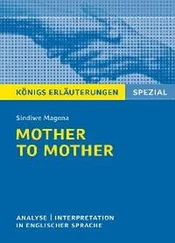Their mothers recovered as if from standard pregnancies—even faster, in some cases. The media was rabid at first, relentlessly covering the AG births in the daily news cycle. Coverage spanned the full political spectrum. One extreme right-wing outlet called it an “elaborate left-wing hoax cooked up by pro-choice fanatics”; counterparts on the left worried that AG might lead to “radical setbacks in reproductive rights.” Popular culprits for the cause, Luke learned, ranged from tainted water to industrial food contamination to estrogen disruptors leached from plastic. Other speculations included bad Chinese vitamins, a chemical weapons attempt by Al-Qaeda, divine intervention, and pharmaceutical interactions.
A few women—Luke noted the names of each who was willing to reveal it—made appearances on the talk show circuit, others did People magazine covers or interviews for a New York Times feature. Social media was in its nascent phase when AG first occurred, but Luke was able to identify heavy trending of the topic on the few platforms—LikeMe, Friendster, MySpace—as well as furious debate in AOL chat rooms and Blogger.
Long after midnight, Luke sipped energy drinks in the silent, empty archives of Config Labs and pored over every old piece of media he could find on AG. Coverage was heavy for roughly eight months after the last birth, he learned, and then began to taper off steadily. The reason for the waning, Luke surmised, was that fresh information on the cause of AG failed to emerge, and the mothers and babies who’d experienced the extraordinary nine-week gestations went on to begin utterly ordinary lives together, the media-unworthy daily routines of diaper changing and feeding and sleep training. Apart from their clefts, the infants were indistinguishable from other infants: loud and demanding and cute, and of little interest to most people beyond immediate family. Certainly not to the drama-craving news cycle. By studying the media trends, Luke could see the public’s interest in AG wane steadily. Other stories took over: new wars and the latest acts of terrorism, political circuses, school shootings, natural disasters, and ugly celebrity divorces.
Acceleration did not repeat. No one knew why. Eventually, the NIH declared the phenomenon a spontaneous aberration of indeterminate cause . The number of reported cases—forty-eight—was small enough for acceleration to be deemed another of nature’s enigmas, like the rapid aging of children with progeria, or one fetus growing inside the other. Twenty years later, it seemed nearly everyone had forgotten. Forty-eight documented cases of accelerated gestation gone to the ether.
Luke couldn’t imagine forgetting. Acceleration was grotesque and triumphant, an unsolved mystery, unduplicated.
He attempted to contact the few AG mothers who had identified themselves publicly: Danielle Auslander of Racine, Wisconsin, and Jane Ford of New York City, both of whom had openly appeared in print, on television, and online. He tracked down the name of another, Irene Brenner, from Austin, Texas, through poorly secured electronic hospital records that indicated a live birth from an AG pregnancy in the spring of 2000. Luke’s investigation of each led him nowhere. Danielle, of the People cover, appeared to now live in Australia, with four children in their teens and twenties, none of whom Luke could identify from Danielle’s social media pages as the accelerated one. They all looked perfectly normal in photos at the beach and graduation ceremonies, curly-haired and grinning at the camera. He sent her messages through LikeMe and Twitter but got no response.
Jane Ford was too generic a name; his search in the New York metro area yielded dozens of results.
Irene Brenner had died in a car accident in her twenties. Luke found only a few brief obituaries that mentioned some biographical details: she had been an excellent student and athlete who’d gone to Yale and rowed crew. She was killed on impact when a drunk driver blew through an intersection. Survived by her parents. No siblings. No mention of Irene’s baby. Luke wondered if the child hadn’t survived, or if Irene had given her up for adoption. Despite the cold leads, acceleration continued to fascinate Luke. He felt he’d discovered a lost key to some forgotten door. Who knew where it led? He wasn’t sure what he might do with the faded story of accelerated gestation, but his gut told him there was an important discovery within it. No one had been able to find it yet. Perhaps they hadn’t looked hard enough.
Luke resolved to look harder.
In the end, it was Reed, of all people, who’d provided the answer. The most valuable thing he’d left to Luke, it turned out, was not the billions in cash and stock but unrestricted access to LikeMe. Reed had died while multiple machines were up and running in his Tiburon mansion; Luke was shocked to discover his father’s relative sloppiness with his personal devices. Then again, Luke was very good at hacking, something he’d taken up as a sort of hobby at Harvard. It took him just a few weeks to crack Reed’s exclusive access to the deep inner algorithms of LikeMe, which had granted him passage to every user profile, every group, every chat, every status update, message, photo, video, rant. That Reed had granted himself rights of entry was wildly illegal, easily worthy of several lifetimes in prison. Luke was not surprised to learn what a liar his father had been, publicly championing the sacredness of online privacy while granting himself full access to every scrap of data ever posted to the site.
Luke was disgusted and thrilled at the same time. What his father had done was egregious, and yet the ability to lurk anywhere on LikeMe, undetected, made Luke feel as if he’d gained the one superpower he’d longed for as a kid: invisibility.
He tried to use his all-access pass sparingly. Despite the excitement of being able to spy on anyone in the world, there weren’t many people Luke actually wanted to secretly observe in their digital habitat. Plus, it was unethical.
But then he discovered the CleftKids, and his conviction wavered. The CleftKids were a chat group on LikeMe classified as “ultraprivate,” which meant only users who’d been invited by the organizer and passed a triple-layer ID verification could join. The group was open to only one minuscule segment of the population: children of accelerated gestation.
It took Luke under two minutes to fully access the group, which had just a handful of members, all teenagers, ages ranging from thirteen to sixteen. As he scrutinized their conversations day after day, his future clicked into place. Connections appeared between the scattered milestones of Luke’s life—his internship at Config, his failed business ideas, his father’s death, his inheritance of LikeMe—like a pattern of stars cohering into the shape of bears or huntsmen. As he lurked, undetectable, in the CleftKids’ virtual room, an idea began to form in his mind, a composite of all he’d learned over the summer. At its center was accelerated gestation, surrounded by everything else he’d learned on those long, silent nights in the lab.
2021
Tessa stepped into Luke’s spacious office in West Lobe, from which he enjoyed sweeping views of the Seahorse Campus, eight floors below, and the blue spark of the Pacific just beyond. It was almost identical to Tessa’s office, just down the hall, but minus any personal touches. Luke’s desk, custom made in Italy, was made from thin planes of opaque glass. Its height could be adjusted with the touch of a button; Luke often stood while he worked, though he also (somewhat reluctantly) enjoyed the ergonomic desk chair gifted to him by the CEO of Aeron as a condolence gift after Reed died. Luke’s desk was as bare as an ice rink but for two large, nickel-thin monitors arranged side by side; his phone; and a green fidget spinner. Adjacent to Luke’s desk was a whiteboard wall covered in dry-erase marker scrawl. Tessa had written half the notes. The only other furniture in the room was a clear Lucite chair for visitors and, beside the far wall of windows, a napping pod—a white orb dangling from a fixture like an upright fishing pole. The floor was polished concrete and the blue-gray walls bare of decor. Luke claimed “environmental asceticism,” as he called it, kept his mind clearer and more productive.
Читать дальше












